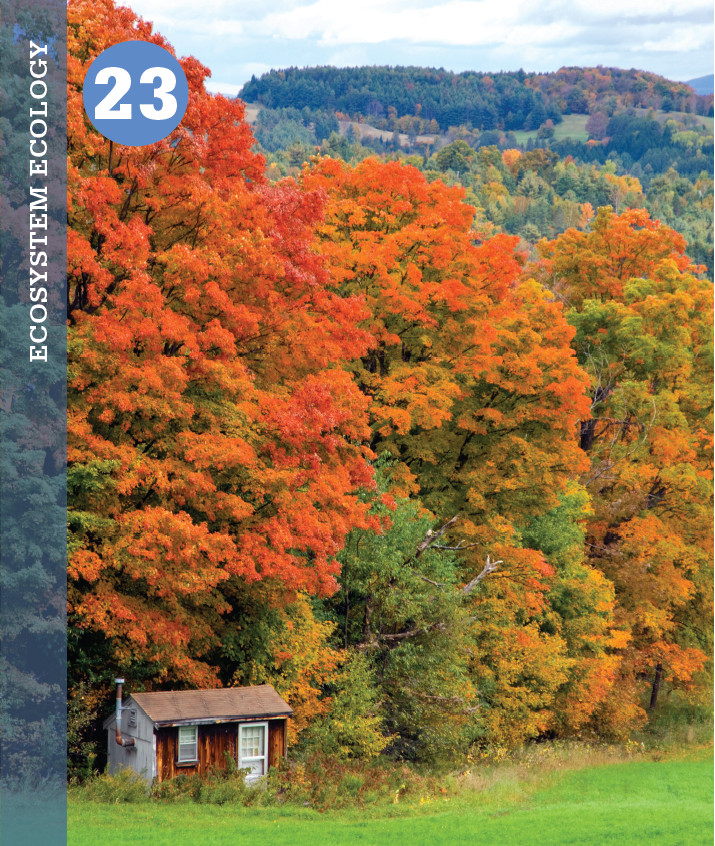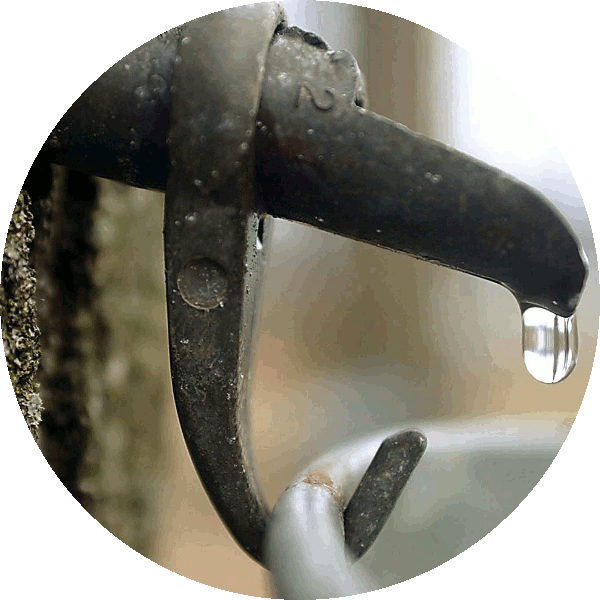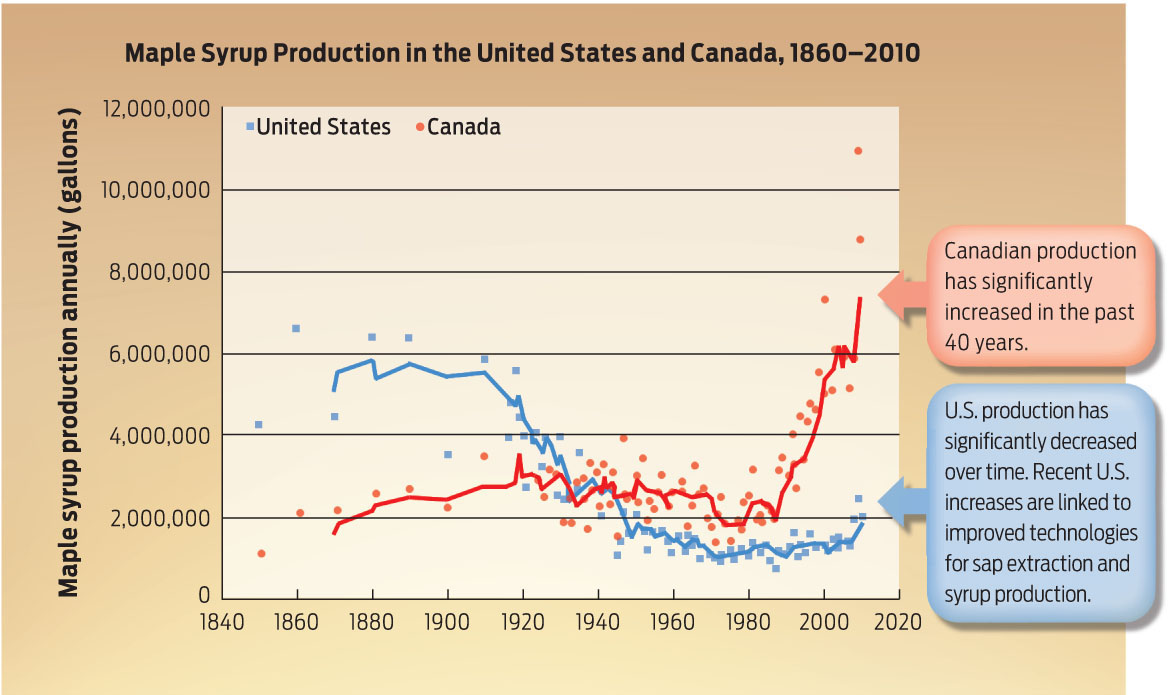486


487
DRIVING QUESTIONS
- What are ecosystems, and how are ecosystems being affected by climate change?
- What is the greenhouse effect, and what does it have to do with global warming?
- How do carbon and other chemicals cycle through ecosystems?
- How are scientists able to compare present-day levels of atmospheric carbon dioxide to past levels, and why would they want to?

 FOR MORE THAN TWO CENTURIES, BURR MORSE’S family has collected sap from Vermont’s maple trees and boiled it to sweetened perfection. If you pour maple syrup over your breakfast pancakes or eat maple-cured ham, you’ve likely enjoyed the results of their careful craft, or that of other Vermont maple syrup farmers. About one in four trees in the state of Vermont is a sugar maple (Acer saccharum), and each year the state produces roughly a million gallons of syrup, making Vermont the number one maple syrup producer in the United States. But what has been a proud family tradition and the economic lifeblood for generations of maple syrup farmers could now very well be in jeopardy.
FOR MORE THAN TWO CENTURIES, BURR MORSE’S family has collected sap from Vermont’s maple trees and boiled it to sweetened perfection. If you pour maple syrup over your breakfast pancakes or eat maple-cured ham, you’ve likely enjoyed the results of their careful craft, or that of other Vermont maple syrup farmers. About one in four trees in the state of Vermont is a sugar maple (Acer saccharum), and each year the state produces roughly a million gallons of syrup, making Vermont the number one maple syrup producer in the United States. But what has been a proud family tradition and the economic lifeblood for generations of maple syrup farmers could now very well be in jeopardy.
488
“In the last 20 years we have had a number of bad seasons and most of those I would attribute to temperature that is a little too warm,” says Morse. “For maple sugaring to work right, the nights have to freeze down into the mid-20s, and the days have to thaw up into the 40s. And the nights for those 20 years, it seemed, were not quite getting cold enough.”
The total economic impact of maple in Vermont alone is nearly $200 million each year.
— TIM PERKINS
Morse isn’t the only one to notice the shift. Maple syrup farmers across New England have noted the changes in temperature and are concerned about their long-term effects.
CLIMATE CHANGE Any substantial change in climate that lasts for an extended period of time (decades or more).
Warmer winters in New England could have a large economic impact on the region. As ecologist Tim Perkins, director of the Proctor Maple Research Center at the University of Vermont, testified to Congress in 2007, “If the northeast regional climate continues to warm as projected, we expect that the maple industry in the U.S. will become economically untenable during the next 50–100 years.” This is not just a drop in the bucket: according to Perkins, “The total economic impact of maple in Vermont alone is nearly $200 million each year.”
GLOBAL WARMING An increase in Earth’s average temperature.
Before 1900, 80% of the world’s maple syrup came from trees in the United States, the rest from Canada. Today, the pattern is reversed, with Canada greatly out-producing the United States. Canada now accounts for about 80% of world maple syrup production. While part of this reversal has to do with marketing, Canadian government subsidies, and improved technologies, scientists believe that climate change is a significant contributing factor, putting New England sugar farmers at a competitive disadvantage (INFOGRAPHIC 23.1). Climate change is any substantial change in climate that lasts for an extended period of time (decades or more). One contributor to current climate change is global warming, a recent and continuing increase in the average global temperature.
The amount of maple syrup produced in in the United States has been declining, in part because of the shortening of the maple syrup season in the northeastern states. Meanwhile, Canadian production has been increasing because of increased marketing, government subsidies, improved technologies, and, likely, climate change.

489
New England’s maples are not the only ones feeling the heat. Plant and animal species throughout the world—from herbs in Switzerland to starfish in California—are being affected by rising temperatures. Some are shifting their geographic ranges as a result. Many historically subtropical aquatic animals, such as seahorses and turtles, for example, are moving toward the coasts of northern England and Scotland, where ocean temperatures are warmer than they used to be. And fish that were once wholly tropical are turning up in North Atlantic waters. Other organisms that cannot easily relocate, like some plants and mountain-dwelling animals, are being driven to extinction.
Earth’s climate changes naturally, and has done so many times in its long history. But scientists now believe that humans are accelerating the pace of change, with potentially dire consequences for life on our planet.